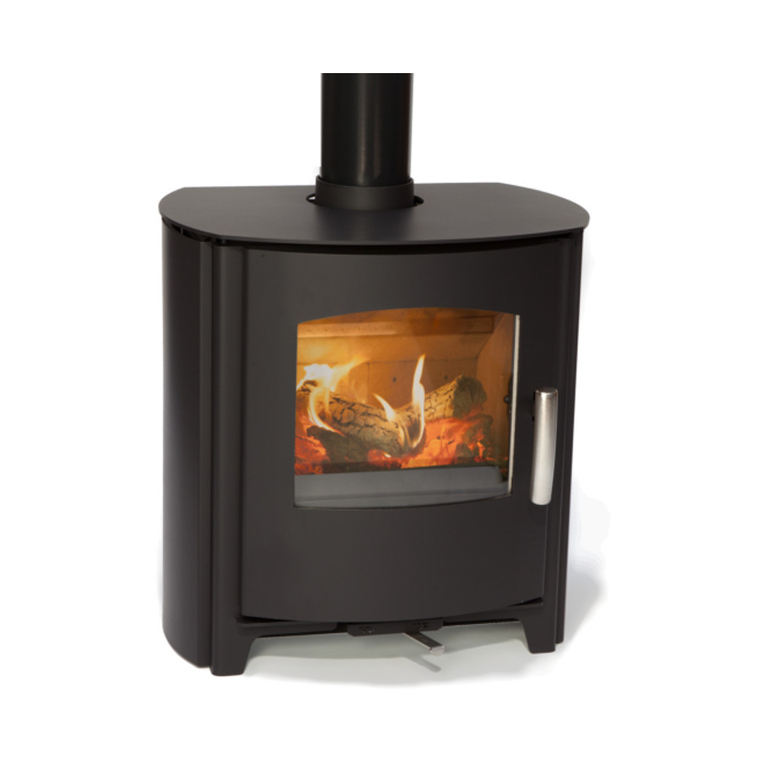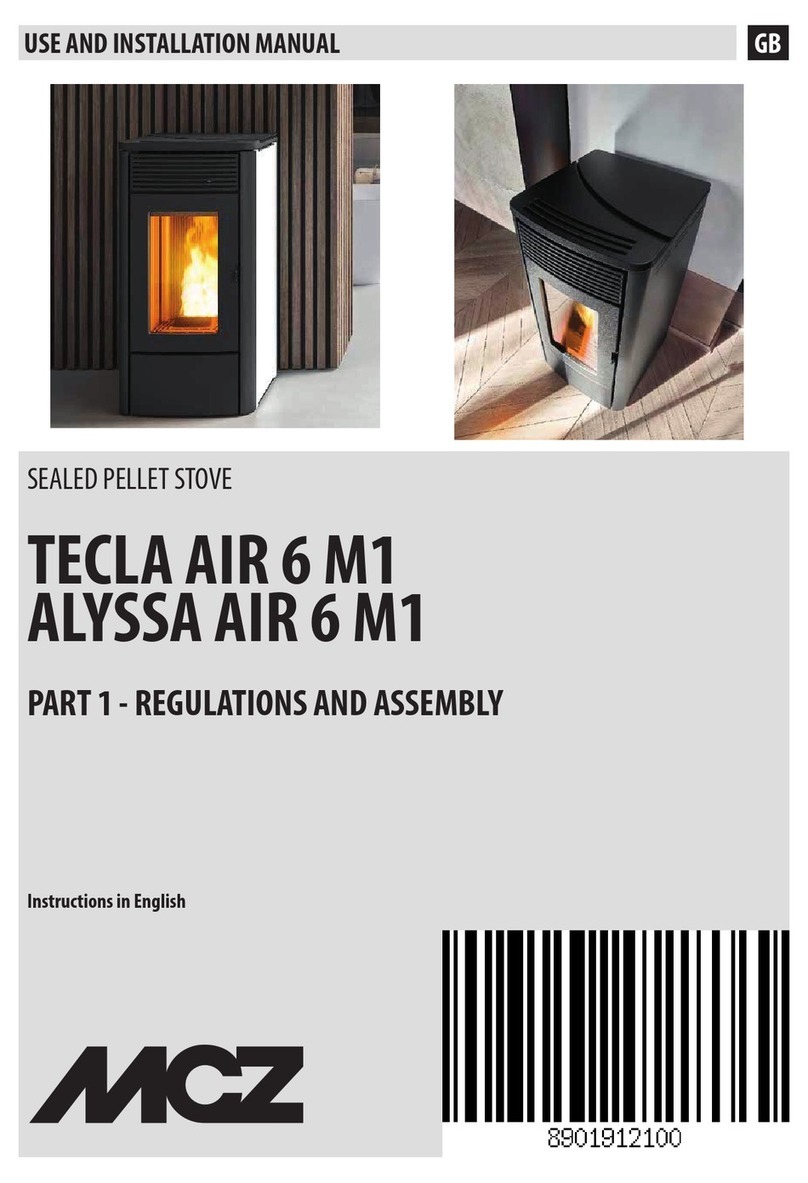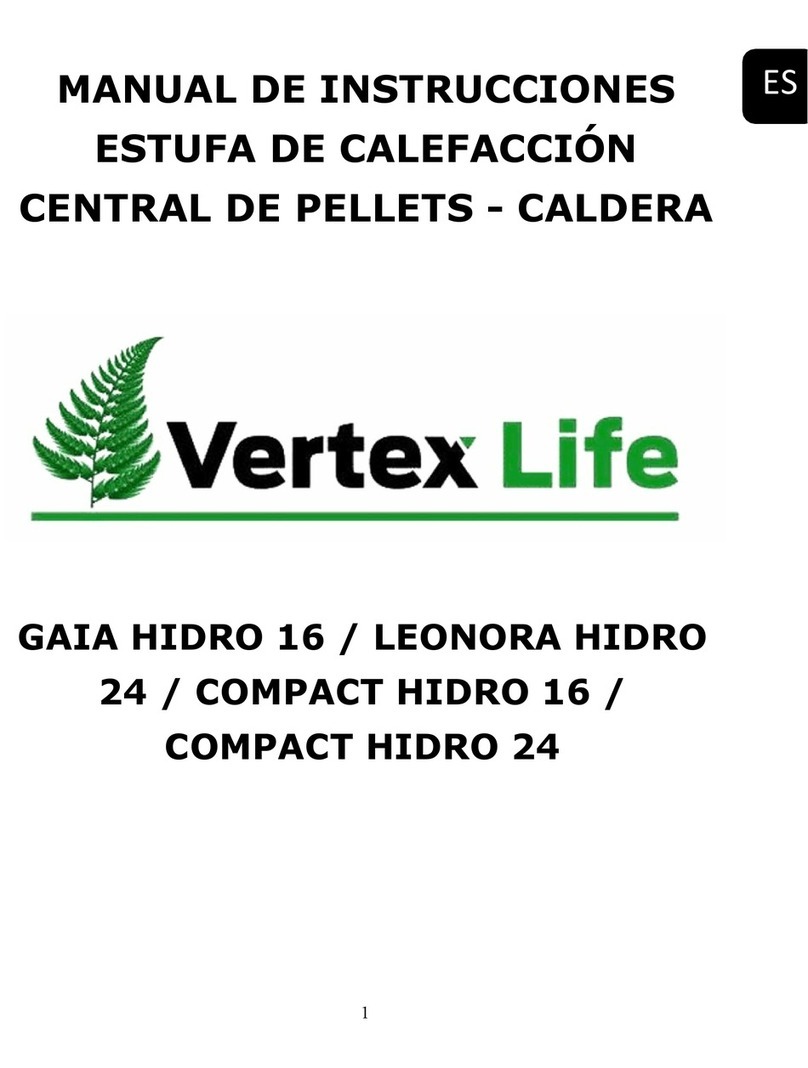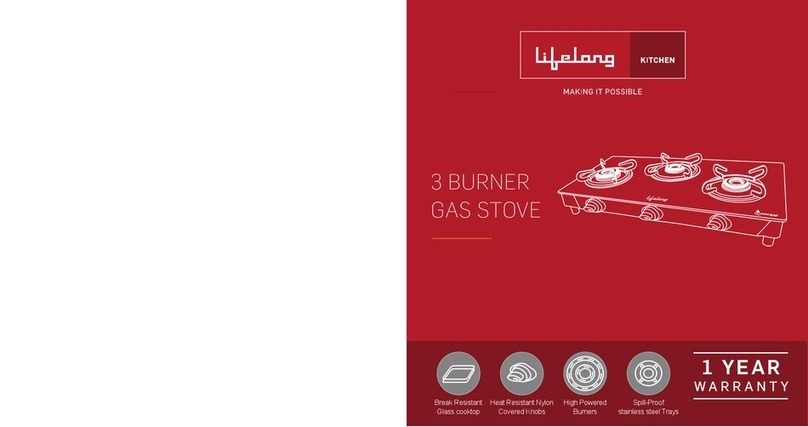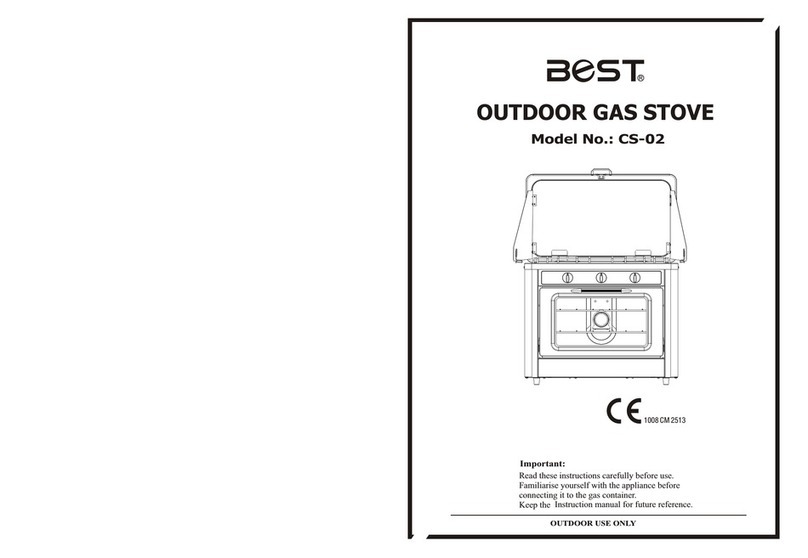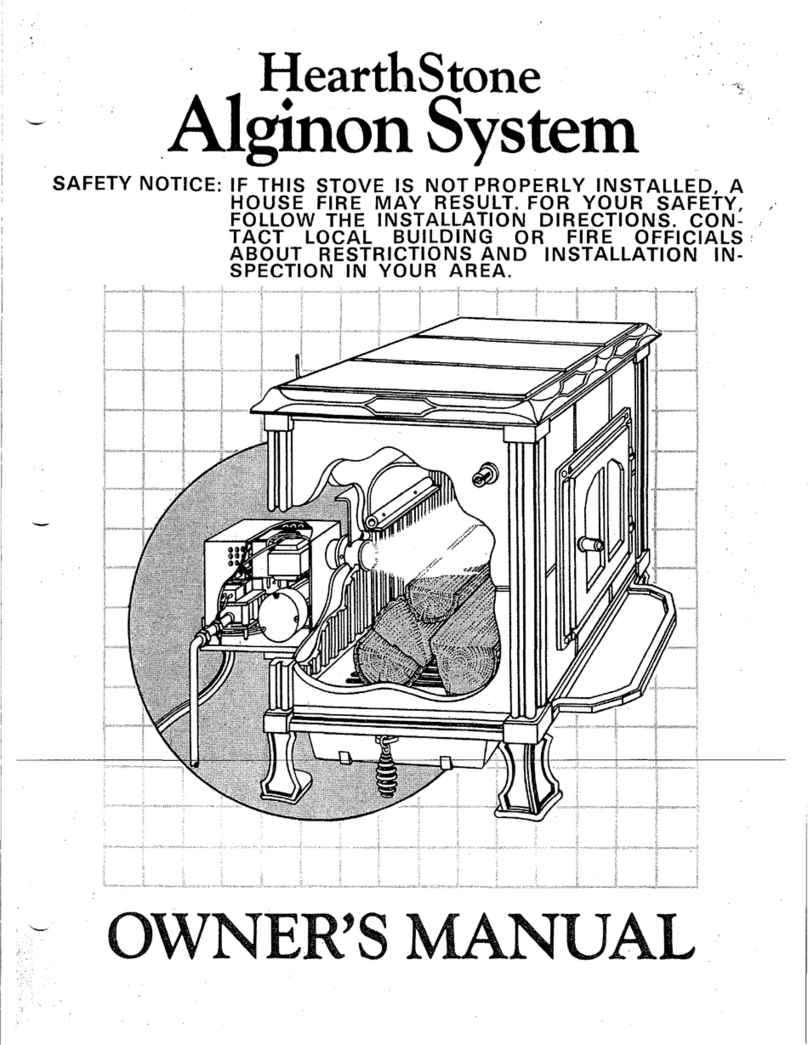Mendip Churchill 8 MK4 SE Churchill 8 MK4 SE... Specification sheet

1
OPERATION AND INSTALLATION MANUAL
Multi-fuel and SE models
Churchill 8 & 10 kW MK4 (SE)
Churchill 8 & 10 kW Convection MK4 (SE)
Churchill 8 & 10 kW Convection Logstore MK4 (SE)
Guide d’utilisation et Mode d'Emploi
ENG/FR
FROM OCTOBER 2018
Version 1.1
Loxton 8 & 10 kW MK4 (SE)
Loxton 8 & 10 kW Logstore MK4 (SE)

2
FOR DETAILS ON SPARE PARTS, AS WELL AS PRICES AND AVAILABILTY, PLEASE VISIT:
www.eurostove.co.uk/mendip-stoves-spare-parts

3
Contents
ITEM
PAGE
Installation Instructions ENG3-11
Exploded Spare Parts Diagrams
Pièces détachées, vue éclatées & assemblage
Operating Guidance
ENG
ENG/FR
12-18
19-22
24-35
CHURCHILL 8 & 10 (SE)
CHURCHILL 8 & 10 CONVECTION (SE)
CHURCHILL 8 & 10 CONVECTION LOGSTORE (SE)
This manual refers to the stoves listed above, which are tested in accordance with EN 13240.
Thank you for purchasing your new stove from Mendip Stoves. Please read this manual carefully to ensure that you get
maximum enjoyment and performance from your new stove and to prevent any potential operational problems. Please note
that “all local regulations, including those referring to national and European Standards, need to be complied with when
installing this appliance”. For further information on installing and using fireplaces and wood burning stoves, please see the
relevant building regulations.
These instructions cover the basic principals to ensure the satisfactory installation of your multi-fuel stove, although detail
may need slight modification to suit particular local site conditions.
INSTALLATION MANUAL
LOXTON 8 & 10 (SE)
LOXTON 8 & 10 LOGSTORE (SE)
Guide d’utilisation et Mode d'Emploi FR
MENDIP STOVES 5 YEAR EXTENDED WARRANTY
If you have purchased your stove from a Mendip Stoves registered retailer, then your stove will carry a 2 year warranty
as standard. The 2 year warranty can be further extended to a total warranty period of 5 years by registering your Mendip
Stove within one month of the latter of the purchase date or installation date. Accordingly,
the start date for the warranty period is the date of purchase. During the registration process,
the Registered Retailer details will be required for your Extended Warranty to be activated.
Any product purchased outside of our registered Retailer Network will carry a standard 12
month, non-extendable warranty. It is a condition of the Extended Warranty that the
installation complies with the relevant Building Regulations and is carried out by a suitably
trained and qualified individual (HETAS in the UK or equivalent in other countries) with the
certificate of installation and proof of purchase supplied. Full terms and conditions are detailed
in the Warranty Statement on the Eurostove website www.eurostove.co.uk. In the event of
any conflict of information the wording on the website shall prevail. Important Note: Should any problems be experienced
with your product, claims must first be submitted to the Retailer where the appliance was purchased from who will offer
immediate assistance or contact Eurostove on your behalf
Register online today to activate warranty: online. http://www.mendipstoves.co.uk/SIT/StoveRegistration
Please see the Warranty Card for the complete terms and conditions.

4
IMPORTANT:
These instructions cover the basic principles to ensure the satisfactory installation of Mendip Stoves
product :- Woodland models, although detail may need slight modification to suit particular local site
conditions.
In all cases the installation must comply with current Building Regulations, Local Authority Byelaws and
other specifications or regulations as they affect the installation of the stove. It should be noted that the
Building Regulations requirements may be met by adopting the relevant recommendations given in British
Standards BS 8303, BS EN 15287 as an alternative means to achieve an equivalent level of performance to
that obtained following the guidance given in Approved Document J.
—----------------------------------------------------------------------------------------------------------------------------------------------------------------
INFORMATION FOR THE USER, INSTALLER AND SERVICE ENGINEER
—----------------------------------------------------------------------------------------------------------------------------------------------------------------
Special care must be taken when installing a stove such that the requirements of the Health & Safety at Work Act are met.
Handling
Adequate facilities must be available for loading, unloading and site handling.
Fire Cement
Some types of fire cement are caustic and should not be allowed to come into contact with the skin. In case of contact
wash immediately with plenty of water.
PREPARATORY WORK AND SAFETY CHECKS
IMPORTANT WARNING
This stove must not be installed into a chimney that serves any other heating appliance. There must not be an extractor
fan fitted in the same room as the stove because this can cause the stove to emit fumes into the room.
Asbestos
This stove contains no asbestos. If there is a possibility of disturbing any asbestos in the coarse of installation then please
seek specialist guidance and use appropriate protective equipment.
Metal Parts
When installing or servicing this stove care should be taken to avoid the possibility of personal injury.
CO Alarms:-
Building regulations require that whenever a new or replacement fixed solid fuel or wood/biomass appliance is installed in
a dwelling a carbon monoxide alarm must be fitted in the same room as the appliance. Further guidance on the
installation of the carbon monoxide alarm is available in BS EN 50292:2002 and from the alarm manufacturer’s
instructions.
Provision of an alarm must not be considered a substitute for either installing the appliance correctly or ensuring
regular servicing and maintenance of the appliance and chimney system.
Stove paint Aerosols
Paint aerosols are flammable and therefore dangerous to use around a lit stove. Be sure to allow aerosols spray paints
to dry and ventilate the room well before lighting the stove. The use of any aerosol around lit stove is dangerous and
care must be take in handling aerosols.
HEALTH AND SAFETY PRECAUTIONS

5
The outlet from the chimney should be above the roof of the building in accordance with the provisions of Building
Regulations Approved Document J. If installation is into an existing chimney then it must be sound and have no cracks or
other faults which might allow fumes into the house. Older properties, especially, may have chimney faults or the cross
section may be too large .
Mendip Stoves recommend the use of a solid fuel flue lining system for all installation into existing chimneys. All chimney
systems must be used in accordance with Building Regulations Approved Document J.
If an existing chimney is used the chimney must be clear of obstruction and be swept clean immediately before installation
of the stove. The chimney should be tested to confirm the chimney will provide the correct chimney pressure for the stove.
If the stove is fitted in place of an open fire the chimney should be swept one month after installation to clear any soot falls
which may have occurred due to the difference in combustion between the stove and the open fire. If there is no existing
chimney then either a prefabricated block chimney in accordance with Building Regulations Approved Document J or a twin
walled insulated stainless steel flue to BS 1856-1 . These chimneys must be fitted in accordance with the manufacturer’s
instructions and Building Regulations. A single wall metal flue pipe is suitable for connecting the stove to the chimney but
is not suitable for using for the complete chimney.
The Loxton /Churchill 8 and 10 are fitted with a 150 mm collar. These models must be installed with a minimum of a 150mm
diameter flue system. Any bend in the chimney or connecting flue pipe should not exceed 45�. 90� bends should not be
used other than within 150mm of stove rear flue outlet.
FLUE & CHIMNEY CONNECTION TO STOVE
Tested Gas flow rates flue
gas temperatures
Flue gas flow rate
Wood /coal
Test flue gas temperature
wood /coal
@ pascals of pressure
Churchill 8
6.1/6.6g/sec
249/290°C
12 pa
Churchill 10
7.9/7.4g/sec
272/264°C
12 pa
Loxton 8
6.1/6.6g/sec
249/290°C
12 pa
Loxton 10
7.9/7.4g/sec
272/264°C
12 pa
Chimney Connection
In order for the stove to perform satisfactorily the chimney height must be sufficient to ensure an adequate
draught to clear the products of combustion and prevent smoke problems into the room.
A chimney height of not less than 4.5 metres measured vertically from the outlet of the stove to the top of the chimney
should be satisfactory. Alternatively the calculation procedure given in BS5854:1980 may be used as the basis for deciding
whether a particular chimney design will provide sufficient draught.
If it is found that there is excessive draught in the chimney then either an adjustable flue damper or alternately a draught
stabiliser should be fitted. The adjustable flue damper should not close off the flue entirely but should in its closed position
leave a minimum continuous opening free area of at least 20 % of the total cross sectional area of the flue or flue pipe.
Adequate provision e.g. easily accessible soot door or doors must be provided for sweeping the chimney and connecting flue
pipe.
Your appliance needs to be maintained routinely, the throat plate/baffle should be cleaned regularly (monthly) . The flue
pipe can be cleaned using a flexible brush. Only Use a dry cloth on external surfaces. Over time the glass may become dirty,
clean with a damp cloth and polish off with damp cloth. If the stove has not been used for some time the flue should be
checked for blockages before use. Do not modify the appliance; only use spares authorised by the manufacturer.

6
Log Length Wood Reload Weight Wood Load Coal Reload Weight Coal (anth)
Churchill 8 35cm 50min 1.5kg 2hr 2.2KG
Loxton 8 35cm 50min 1.5kg 2hr 2.2KG
Churchill 10 60cm 45min 2kg 2hr 2.2KG
Loxton 10 60cm 45min 2kg 2hr 2.2KG
Output
Wood Fuel
Efficiency CO@13%
O₂
Suitable for
DEFRA Smoke
Control Zones
Output Coal
Fuel
Efficiency CO@13% O₂
Churchill 8 7.5kW 79.3% 0.09 Yes / SE model 7.0kW 71% 0.11
Loxton 8 7.5kW 79.3% 0.09 Yes / SE model 7.0kW 71% 0.11
Churchill 10 9.5kW 81.0% 0.09 Yes / SE model 7.0kW 71.70% 0.25
Loxton 10 9.5kW 81.0% 0.09 Yes / SE model 7.0kW 71.70% 0.25
STOVE PERFORMANCE & TESTING
Minimum Distance to Combustible Materials
Combustible materials should not be located where the heat dissipating through the walls of fireplaces or flues could ignite
it. Therefore when installing the stove in the presence of combustible materials due account must be taken of the guidance
on the separation of combustible material given in Building Regulations Approved Document J and also in these stove
instructions. The minimum distances to flammable materials are specified on the EN 13240 plate on the back of the stove.
When installing the stove 100mm from a combustible wall behind , use the additional, rear convection panel supplied
with the stove, this slots over the rear convection panel providing additional radiant protection from the flue collar. A twin
wall insulated flue should be fitted flush to flue collar for this type of installation.
Stove Model Minimum Distance to Combustible Materials Suitable for 12mm non-
combustible floor plate
REAR SIDES
Churchill 8 100mm 600mm YES
Churchill 8 Convection 100mm 150mm YES
Churchill 8 Convection Logstore 100mm 150mm YES
Loxton 8 100mm 600mm YES
Loxton 8 Logstore 100mm 600mm YES
Churchill 10 100mm 500mm YES
Churchill 10 Convection 100mm 100mm YES
Churchill 10 Convection Logstore 100mm 100mm YES
Loxton 10 100mm 500mm YES
Loxton 10 Logstore 100mm 500mm YES
PLEASE NOTE THAT A MINIMUM DISTANCE OF 1350mm TO SOFT FURNISHINGS SHOULD ALWAYS BE MAINTAINED
Mendip Stoves, The Loxton & Churchill models are tested in accordance with EN 13240.
Weight & Nominal Heat Output for Wood and Smokeless Fuels

The stove can be recessed in a suitable sized non - combustible fireplace but a permanent free air gap of at least 50mm
must be left around the sides, the top and the back of the stove; this is to facilitate a reasonable heat output and allows
access to the stove for removal and maintenance. A clearance of 100mm will give a better heat output.
All non - combustible walls closer than 100mm to the stove should be at least 75mm thick. For practical reasons the back
wall of the fireplace recess and the hearth should ideally be made of non -combustible material. When installing your stove
in a non combustible chamber, combustible materials should not be located where the heat dissipating through the walls
of fireplaces or flues could ignite it. Therefore when installing the stove in the presence of combustible materials due account
must be taken of the guidance on the separation of combustible material given in Building Regulations Approved Document
J and also in these stove instructions. The minimum distances to flammable materials are specified on the EN 13240 plate
on the back of the stove.
To ensure that the stove has sufficient air flow available to it during operation, please allow at least 40mm of clearance from
the back of the air intake to the rear wall. This means that if you are installing your stove between 50mm and 100mm away
from a non - combustible wall, it may be necessary to remove the intake spigot.
MINIMUM DISTANCE TO NON-COMBUSTIBLE MATERIALS
HEARTH
The hearth should be able to accommodate the weight of the stove and its chimney if the chimney is not independently
supported. The Churchill and Loxton stoves have been tested and are suitable to be installed on a 12 mm non combustible
plate, such as 12 mm glass plates . Installation of all hearths should comply in size and construction so that it is in accordance
with the provisions of the current Building Regulations Approved Document J.
The clearance distances to combustible material beneath, surrounding or on the hearth and walls adjacent to the hearth
should comply with the guidance on the separation of combustible material given in Building Regulations Approved Document
J and also in these stove instructions.
If the stove is to be installed on a wooden floor, it must be covered with a non-combustible material at least 12 mm thick,
in accordance with Building Regulations Approved Document J, to a distance of 30 cm in front of the stove and 15 cm to
each side measuring from the door of the combustion chamber.
7

8
**
B1
B3
B2
C2
D
E
F
C1
C3
G
STOVE DIMENSIONS AND CONNECTION MEASUREMENTS
DIMENSIONS DES POÊLES ET DE TAILLES DE RACCORDEMENT
CHURCHILL 8 CHURCHILL 8
CONVECTION
CHURCHILL 8
CONVECTION
LOGSTORE /
RANGE-BÛCHE
LOXTON 8
LOXTON 8
LOGSTORE /
RANGE-BÛCHE
HEIGHT / Hauteur A665mm 665mm 1011mm 665mm 865mm
WIDTH / Largeur
B1
N/A 563mm 583mm N/A N/A
B2
490mm N/A N/A 490mm 490mm
B3
510mm 583mm 583mm 510mm 510mm
DEPTH / Profondeu
C1
345mm 345mm 345mm 345mm 345mm
C2
479mm 479mm 479mm 407mm 407mm
C3
478mm 478mm 478mm 472mm 472mm
Flue Collar size D150 mm 150mm 150mm 150mm 150mm
CENTRE OF FLUE TO REAR OF
STOVE / Centre de la sortie de
fumée et l'arrière du poêle
E142mm 142mm 142mm 142mm 142mm
CENTRE OF REAR FLUE OUTLET
TO FLOOR / Centre de la sortie
de cheminée arrière et le sol
F564mm 564mm 918mm 564mm 764mm
CENTRE OF AIR INTAKE TO
FLOOR / Centre de la prise d'air
et le sol
H46mm 46mm 400mm 46mm 246mm
WEIGHT / Poids –91kg 98kg 117kg 91kg 125kg
DISTANCE FROM / Distance
The direct air intake spigot (80mm diameter) to the rear of the stove is removable with a 2.5mm Allen key.
Le collier d'admission d'air direct (diamètre 80 mm) à l'arrière du poêle est amovible avec une clé Allen de 2.5 mm.

9
STOVE DIMENSIONS AND CONNECTION MEASUREMENTS
DIMENSIONS DES POÊLES ET DE TAILLES DE RACCORDEMENT
CHURCHILL
10
CHURCHILL
10
CONVECTION
CHURCHILL 10
CONVECTION LOGSTORE /
RANGE-BÛCHE
LOXTON 10
LOXTON 10
LOGSTORE /
RANGE-BÛCHE
HEIGHT /Hauteur A665mm 665mm 1052mm 665mm 865mm
WIDTH /Largeur
B1
N/A 759mm 759mm N/A N/A
B2
686mm N/A N/A 686mm 686mm
B3
696mm 779mm 779mm 706mm 706mm
DEPTH/ Profondeu
C1
358mm 358mm 358mm 358mm 358mm
C2
482mm 482mm 482mm 413mm 413mm
C3
478mm 478mm 478mm 472mm 472mm
Flue Collar D 150mm 150mm 150mm 150mm 150mm
CENTRE OF FLUE TO REAR OF STOVE
/ Centre de la sortie de fumée et
l'arrière du poêle
E142mm 142mm 142mm 142mm 142mm
CENTRE OF REAR FLUE OUTLET TO
FLOOR / Centre de la sortie de
cheminée arrière et le sol
F564mm 564mm 918mm 564mm 764mm
CENTRE OF AIR INTAKE TO FLOOR/
Centre de la prise d'air et le sol H46mm 46mm 400mm 46mm 246mm
WEIGHT /Poids –110kg 117kg 133kg 110kg 125kg
A
B1
B2
D
B3
C 2
E
C 1
C 3
F
H
DISTANCE FROM / Distance entre
The direct air intake spigot (80mm diameter) to the rear of the stove is removable with a 2.5mm Allen key. Le collier d'admission
d'air direct (diamètre 80 mm) à l'arrière du poêle est amovible avec une clé Allen de 2.5 mm.
** The additional, rear convection panel (supplied loose within the stove) needs to be used when installing the stove 100mm
from a combustible wall; this slots over the rear convection panel and provides additional radiant protection from the flue
collar. / Le panneau de convection arrière supplémentaire (fourni séparément dans le poêle) doit être utilisé lors de l’installation
du poêle à 100 mm d’un mur combustible; cette fente sur le panneau de convection arrière et fournit une protection radiante
supplémentaire du collier.
**

10
HOW TO FIT A LOXTON LOGSTORE
Remove the internal components of the stove and fill the
chamber with material to prevent the bricks from falling.
Additionally, prepare a soft elevated surface.
Tilt the stove onto it’s side to allow easy and safe access
to the feet. Unscrew the levelling bolts at the foot of the
stove leg.
Position the Logstore legs and use the levelling feet to secure them to the body of the stove. Use a
spanner or a socket wrench to fully tighten.
Right the stove and see if the legs are in the correct position; they should be inline with the front
legs of the Woodand / Loxton and have an even overhang where the legs meet the stove body. If
not then loosen one leg at a time and adjust until satisfied.

11
In order for the stove to perform efficiently and safely there should be an adequate permanent air supply into the room in
which the stove is installed to provide combustion air. This is particularly necessary if the room is double-glazed or a flue
draught stabiliser is operating in the same room as the appliance. The provision of air supply to the stove must be in
accordance with current Building Regulations Approved Document J. An opening window is not appropriate for this purpose.
Air inlets must be positioned in such a way that they cannot be blocked. An air inlet may be a vent (the vent must be open
and the capacity for the vent sufficient when the stove is lit) .
Woodland models take all combustion air (primary, secondary & tertiary) from a single 80mm port at the bottom rear of
the stove, with the door closed the air port supplies all combustion air for the appliance. This port can be connected to the
outside via a 80mm pipe so the appliance does not draw combustion air from the room. However as this stove needs the
door to be ajar when lighting and combustion air is taken from the room when reloading. Mendip stoves recommends
the use of an additional air vent as laid out in document j .
The stove requires a permanent air vent to the room . This is to provide adequate air supply in order for the stove to operate
safely and efficiently. In accordance with current Building Regulations the installer may have fitted a permanent air supply
vent into the room in which the stove is installed to provide combustion air. This air vent should not under any circumstances
be shut off or sealed.
COMBUSTION AIR & PERMANENT AIR VENT
COMBUSTION CHAMBERS & FLUE CONNECTION
Mendip Stoves are fitted internally with vermiculite heat deflection panels and baffles, these panels are designed to ensure
the maximum efficiency and are an integral part of the clean burn process of the stove. These baffles should not be removed
other than for cleaning the stove. Any defective panels should be replaced, (small hairline cracks do not need replacement)
however can develop during long term use to a larger crack, if this passes through the vermiculite to the stove body then
the panel must be replaced. When refuelling your stove place the wood fuel into the chamber (wearing a glove), impact
from logs can cause the heat deflection panel to crack.
Connection to chimney
Mendip Stoves are built with a top flue outlet as standard, this can be altered to a rear connection by removing the top
collar, rear cover plate then exchanging collar and plate. Care should be taken to ensure an airtight fit when refitting collar
and plate. When installing a rear flue exit model please remove rear cleaning steel plate inside the flue collar box.
A decorative cover plate is included in each stove to cover the hole in the convection top plate. This collar allows connection
to either a masonry chimney or a prefabricated factory made insulated metal chimney.
COMMISSIONING AND HANDOVER
Ensure all loose parts (bricks and grates) are fitted in accordance with the instructions given in the instruction booklet. On
completion of the installation allow a suitable period of time for any fire cement/silicon and mortar to cure, a small fire may
be lit to check that smoke and fumes are taken from the stove up the chimney and emitted safely into the atmosphere.
Do not run at full output for at least 24 hours after this appliance has been installed.
On completion of the installation and commissioning ensure that the operating instructions for the stove are left with the
customer. Ensure to advise the customer on the correct use of the appliance with the fuels likely to be used in the stove and
notify them to use only the recommended fuels for the stove. Advise the user what to do should smoke or fumes be emitted
from the stove. The customer should be warned to use a fireguard to BS 8423:2002 in the presence of children, aged and/or
infirm persons.
SE Cleanheat- Smoke Exemption Modification
Smoke exempt (SE) models are factory fitted with an air stop on the air
control slider: To adjust the smoke control settings, use an Allen key to
adjust the fixing in the air intake (at the rear of the stove).
Loxton 8 Churchill 8 & Woodland Large : This stoves needs no stop
Loxton 10 , Churchill 10 : This stoves requires a restriction of travel of 5mm
When unrestricted the air control has a travel of 40mm
The SE fixing is deigned to prevent the air supply of the stove from being
completely shut off; this promotes complete combustion and therefore
acts to decrease harmful pollutants as a result of incomplete combustion.
DO NOT OBSTRUCT THE AIR INTAKE
At least 40mm clearance should be left between the air intake and the wall
SE air stop adjustment

12
LIGHTING YOUR STOVE FOR THE FIRST TIME
Before lighting your stove for first time make sure you have read this manual fully and acquainted
yourself with the controls of this appliance.
Ensure that you have allowed sufficient time for the heat resistant sealant to cure.
The heat-resistant paint on your stove will cure and harden the first time you light your appliance.
The curing process produces a good deal of smoke and odour, it is therefore important that the first time you light your
stove the room should be well ventilated.
During the process it is important to open and close the stove door periodically (every 30mins) during the first couple of
firings therefore preventing the door seal cord around the door from sticking and coming away from the door. Once the
heat-resistant paint has hardened the smell will disappear.
Your stove is NOT designed to be used with the door open, the stove door must be kept closed except when lighting the
stove, adding firewood or removing ash in order to prevent flue gases from escaping.
Use of Fire lighters
Quality Firelighters should be used when lighting your stove. (Never use mentholated spirit, petrol or other flammable liquids).
Lighting your stove with firelighters will be more reliable and easier than using paper. Lighting your fire with paper results
in excess smoke, more ash and possible blackening of glass.
OPERATING YOUR STOVE - THE MK.4 AIR CONTROL LEVER
The Universal air controller provides air control for the whole stove from a single lever. The Lever has two key operations
LEFT: PRIMARY AIR
Decreased Air Supply
Moving the control
lever in and out
Sliding the control
lever in reduces and
out increases the total
amount of combustion
air in the stove.
Moving the control lever from left to right:
By moving the control lever to the left increases
the primary air mix and moving to the right
increases secondary air (airwash) mix .
Whatever position the control is set at, the lever
can have either minimum combustion air or
maximum combustion air.
RIGHT: SECONDARY AIR
Increased Air Supply

13
Note: If the chimney is externally fitted or the stove has been installed
on a larger diameter clay chimney liner then on cold days it maybe
necessary to warm the flue using firelighters prior to lighting with wood.
1. Place a few smaller pieces of dry wood (kindling) in the stove on top of
the non toxic firelighters, place one or two small dry split logs (¼ split) on
top. Kindling stacked as in diagram allows combustion air flow freely and
will aid ignition.
2. Position the Universal Air Control (UAC) lever below the stove door so
that is to the left and fully open (pulled out); this provides the stove with
a mix of primary and secondary air to help establish the fire.
3. Light the firelighters and push door to closed position, latch in 1st
position so the door is open 2 mm. (see picture) This provides additional
combustion air for start up and reduces condensation on the door glass.
4. Once the flames from the logs are fully established , this can take up to
10 min's . The door can now be closed. Slide the UAC control in the middle
position. If the stove flames begin to falter and generate smoke in chamber
unlatch the door again until the fire is fully established.
5. Once the fire bed is established slide UAC control to the secondary
position and push in slider by 50%, for the stove to burn cleanly plenty of
secondary air is needed, do not be tempted to shut the fire down too early
as this may cause smoke. At nominal heat output, expect to refuel your
stove approximately once an hour. Check load weights for your model on
the table on page 6.
Use the glove when operating air controls and door.
HOW TO LIGHT YOUR WOODBURNING STOVE
The stove will get very hot during use, therefore due care must be exercised.
Please use the glove when operating air controls, door and ash pan.
WOOD FUEL
Good quality wood is the most important factor in your stove working efficiently and cleanly. Always use dry split hardwood
firewood (moisture content of 20% or less). The dryness of the firewood plays an important role because the use of wet
wood results in poor fuel economy and may cause a tarry sooty film on the internals of the stove.
Newly cut wood contains 60–70% water, making it totally unsuitable for use as firewood; it should be stacked and air dried
under cover for two years before being used as firewood.
Do not burn liquid fuels, drift wood, finished, sawn wood, pallet wood, chipboard/plywood, varnished wood or plastic
coated wood, wood treated with preservatives, or house hold waste.
Door Ajar to Aid Start-up
3.
Full Air Supply in Central Position
4.
Reduced Air Supply in Secondary Position
5.
Full Primary Air
2.
1.
Arrange your Kindling & Logs as shown

14
Properly installed, operated and maintained this stove will not emit fumes into the dwelling. Occasional fumes from
de-ashing and re-fuelling may occur. However, persistent fume emission is potentially dangerous and must not be
tolerated. If fume emission does persist, then the following immediate action should be taken:-
(a) Open doors and windows to ventilate the room and then leave the premises.
(b) Let the fire go out.
(c) Check for flue or chimney blockage and clean if required
(d) Do not attempt to relight the fire until the cause of the fume emission has been identified and corrected. If necessary
seek expert advice.
The most common cause of fume emission is flue way or chimney blockage. For your own safety these must be kept clean
at all times.
CO Alarm
Your installer should have fitted a CO alarm in the same room as the appliance. If the alarm sounds unexpectedly, follow
the instructions given under “Warning Note” above.
Aerosols
Aerosols are flammable and therefore dangerous to use around a lit stove. Do not use aerosols sprays near your lit stove.
The use of any aerosol is dangerous and care must be take in handling aerosols.
WARNING NOTE
OPERATING YOUR STOVE
Suitable fuels:- Your stove is tested to burn wood or registered smokeless coal. Wood briquettes can also be burnt but
special account should be taken of fuel weight. For a full list of suitable fuels, check with the official solid fuels approvals
body, HETAS or Solid Fuel Association. Do not overload stove as this can cause excessive heat and damage the stove (see
table on page 6).
ALWAYS KEEP FUEL LOAD BELOW TERTIARY PORTS AT REAR OF STOVE. Only use fuels approved for use on heating stoves.
Do not burn liquid fuels, drift wood, finished wood, sawn wood, pallet wood, chipboard/plywood ,varnished wood or
plastic coated wood, wood treated with preservatives, or any house hold waste.
DO NOT EXCEED SPECIFIED FUEL WEIGHTS (SEE pg.6).
DO NOT RUN AT FULL OUTPUT FOR EXTENDED PERIODS OF TIME.
DO NOT BURN HOUSE COAL. DO NOT BURN HOUSEHOLD WASTE.
THIS APPLIANCE IS NOT AN INCINERATOR.
MENDIP STOVES RECOMMEND THE USE OF A FLUE THERMOSTAT TO CHECK YOUR STOVE IS NOT
OVERHEATING. PLACE FLUE THERMOSTAT DIRECTLY ABOVE COLLAR OF STOVE AND REFER TO
TEMPERATURE GAUGE ON PAGE 5.
These appliances have been approved by HETAS Ltd as an intermittent operating appliance for burning both wood and smokeless
fuels only.
HETAS recommended fuels:
Please note that HETAS Ltd Appliance Approval only covers the use of wood logs and approved smokeless fuels on this appliance.
HETAS Ltd Approval does not cover the use of other fuels either alone or mixed with the recommended fuels listed above, nor
does it cover instructions for the use of other fuels.
HETAS LTD APPROVAL

15
RE-FUELLING WHEN BURNING WOOD
Adding fuel to your stove when you only have glowing embers,and the flames have died down, is the
cleanest way to refuel your stove.
1. Before refuelling, open the Universal Air Control (UAC) fully and slide to the central position.
2. Unlatch the door to equalise the pressure inside the stove with that of the room.
3. Then, open the door gently.
4. If it is necessary, use a poker to create a level bed before adding a piece of wood below the level of
the tertiary air ports (please check weight table page 6).
5. Now, close the door.
6. Once the flames are fully established, slide the UAC lever to the right (secondary air / airwash) and
half way in (50% air supply).
Please regard these instructions as guidelines because each installation will be slightly different. Experience will determine
the settings that produce best results.
To prevent overheating your appliance we recommend that you use a flue thermostat (placed on a non insulated section of
pipe directly above the collar of the stove).
The efficient operating temperature range is between 180°C and 250°C
These stoves are not designed to run overnight or for long periods unattended (see pg.14)
Incomplete combustion may lead to a build-up of hard, shiny soot on the inside of your stove and glass. It is generally the
results of an insufficient air supply to the combustion chamber. If you find that this build-up is occurring to your Mendip
Stove, you should:
1. Increase the amount of secondary air used when running the stove,
2. Check that the fuel you use is suitable and dry (less than 20% moisture content).
3. Check that your flue system (chimney) is producing sufficient draught.
It is important to check the draft conditions before lighting your stove. This may be done, for instance, by crumpling a piece
of newspaper, placing it in the combustion chamber and lighting it. The draft conditions are good if the smoke is drawn away
through the chimney.
INCOMPLETE COMBUSTION
1. Fire Will Not Burn - check
a) the air inlet is not obstructed in any way,
b) that chimney and flue ways are clear,
c) that a suitable fuel is being used,
d) that there is an adequate air supply into the room,
e) that an extractor fan is not fitted in the same room as
the fire.
2. Fire Blazing Out Of Control - check
a) the doors are tightly closed,
b) the air controls are turned down to the minimum
setting,
c) the flue damper is closed ( if fitted),
d) a suitable fuel is being used,
e) the door seals are in good condition.
f) the chimney draft may be too strong
g) check ash pan seal and
h) check for ash below ash pan causing pan to seat
incorrectly and clean out.
3. Soot forms on the window
a) The firewood may be too wet
b) the intake of secondary air may be insufficient
c) fire not hot enough
4. The stove fails to heat fully
a) The firewood may be too wet
b) the intake of secondary air may be insufficient
5. Smoke or odour
a) weak chimney draft
b) check for blockages in the flue pipe/chimney
c) check the height of the chimney relative to the
surroundings
6. Soot in the chimney
a) The firewood may be too wet
b) intake of secondary air may be insufficient
TROUBLE SHOOTING

16
SOLID SMOKELESS FUELS-
The Woodland model is suitable for use with good quality smokeless fuels and has been fully tested to the relevant European
standard. Only use registered smokeless fuels on this stove. Take special note of load quantities (page 6).
Note: on cold days it maybe necessary to warm the flue using two firelighters.
1. Place Firelighters and a few smaller pieces of dry wood (kindling) among a small quantity of fuel in the
combustion chamber.
2. Fully open (pull out) the Universal Air Control (UAC) and slide it to the left (primary) position; this means that
your stove is now has total primary air for start up.
3. Using a long match to light the firelighters and securely close door.
4. Once the fire is established, open the door and add a full load of fuel (see weight table on page 3)
Do Not Overload. Do not cover the tertiary air ports.
5. Close fire door and adjust the UAC so that is still to the left (primary air) but that it is now 80% open.
6. Once the additional fuel is burning, adjust the UAC to alter the amount of primary air entering the combustion
chamber to your personal preferance.
Please regard these instructions as guidelines because each installation will be slightly different. Experience will determine
the settings that produce best results.
To prevent overheating your appliance we recommend that you use a flue thermostat (placed on a non insulated section
of pipe directly above the collar of the stove).
The efficient operating temperature range is between 180°C and 250°C
These stoves are not designed to run overnight or for long periods unattended (see “Overnight Burning”)
To Re-fuel Your Stove Using Solid Fuel:
1. Your stove will need to be refueled approximately every hour (see page 6.)
2. Before refuelling, open the UAC control to full primary air.
3. Then slowly open door to allow the pressure to equalise between the inside of the stove and the room.
4. Once the door has been opened, de -ash your stove with use of poker (not provided).
5. Add fuel (see weight table on page 6), ensuring the fuel is placed below the level of the tertiary air ports.
6. Finally, close the door and when then fire has re-established reduce the air supply using the UAC to your
preferred settings.
PLEASE USE A HEAT RESISTANT GLOVE WHEN OPERATING THE AIR CONTROLS, DOOR AND ASH PAN,
AS THE APPLIANCE WILL BECOME VERY HOT.
HOUSE COAL AND PETROLEUM COKE ARE NOT SUITABLE FOR USE
ON THIS STOVE; ITS USE WILL INVALIDATE THE GUARANTEE.
LIGHTING THE STOVE - SOLID FUELS
Mendip Stoves do not recommend burning registered smokeless coal in a slumbering position, Mendip stoves are designed
to burn wood and quality registered smokeless fuels. Wood burns more efficiently and cleanly if it is burnt hotter. Mendip
stoves do not recommend that their stoves are burnt overnight for this reason.
As a night time regime we recommend that the fire is loaded when hot and burnt for five minutes with the secondary air
control fully open, until the new wood has taken and is burning, Then place the UAC to its operational position (50% Secondary
Air). On returning to the stove in the morning the fire will have burn out, reload with some paper (or a firelighter) and some
kindling, Fully open the UAC to the central position and relight quickly. Beware as the ash bed will have hot embers.
OVERNIGHT BURNING

17
Ensure that your appliance, flue ways and chimney are swept regularly. This can be incorporated in the service regime of
your appliance. Regular sweeping is essential and means at least once a year for smokeless fuels and a minimum of twice
a year for wood . If a throat plate is incorporated, it is essential that the throat plate is removed and cleaned above, all ash
and debris should be removed. Ensure adequate access to cleaning doors where it is not possible to sweep the chimney
through the appliance.
Where a chimney has served an open fire installation previously it is possible that the higher flue gas temperature from a
closed appliance may loosen deposits that were previously firmly adhered, with the consequent risk of flue blockage. It
is therefore recommended that the chimney be swept a second time within a month of regular use after installation of the
stove.
Chimney Fires
If the chimney is thoroughly and regularly swept, chimney fires should not occur. However, if a chimney fire does occur turn
the air control setting to the minimum, and tightly close the doors of the stove. This should cause the chimney fire to go
out in which case the control should be kept at the minimum setting until the fire in the stove has gone out. The chimney
and flue ways should then be cleaned. If the chimney fire does not go out when the above action is taken then the fire
brigade should be called immediately.
After a chimney fire the chimney should be carefully examined for any damage. Expert advice should be sought if
necessary
Mendip stoves recommends that your model needs to have the ash removed from the stove at regular intervals (weekly if
used daily). Allowing the ash pan to over flow can impede the function of the stove and can cause possible damage to the
stove grate and ash pan. To remove ash pan use heat protecting glove provided . Lift and pull out of firebox chamber. Take
care to support ash pan during movement. Make sure the stove is completely cold before cleaning out ash (embers can
remain hot for over 24 hours).
Ash must be stored in a non-combustible container and must not be mixed with other combustible waste.
Annual service
The stove should be serviced by a registered dealer once a year. The stove, the flue pipe connection and the chimney should
be checked regularly by a qualified engineer. The chimney should also be checked for blockages before relighting the stove
if it has not been used for an extended period of time. Insulating fire bricks checked for wear and replaced if necessary door
and ashpan rope seals should be changed annually, glass clamps & glass should checked making sure glass is correctly
positioned.
To clean the inside the stove, remove all ash, soot and tar residue from the combustion chamber. Remove insulated chamber
panels and baffle, dirt and soot will collect behind it and this must be cleaned out. The paint/ lacquer can wear thin in
exposed places due to overheating. This, and other lacquer damage, may be repaired using Senotherm paint/lacquer spray
available from your Mendip dealer. To clean the outside of the stove use a dry cloth.
Your stove should be serviced annually by a registered dealer as a condition of the extended warranty of the stove, failure
to maintain a service record will invalidate the extended warranty on your stove.
Prolonged non use (summer)
If the stove is to be left unused for a prolonged period of time (e.g. over the summer) then it should be given a thorough
clean to remove ash and unburned fuel residues. To enable a good flow of air through the appliance to reduce condensation
and subsequent damage, leave the air controls fully open.
It is important that the flue connection, any appliance baffles or throat plates and the chimney are swept prior to lighting up
after a prolonged shutdown period.
Spare parts & unauthorised alterations
Only the manufacturer's own components, or replacement parts recommended and approved by Mendip stoves, shall be
used for appliance servicing and repair. Any unauthorised alterations will invalidate the stove warranty and compliance with
EN13240.
MAINTENANCE
SWEEPING YOUR CHIMNEY & CHIMNEY FIRES

18
You must purchase a smoke exempt version of a Mendip Stove; this will be modified slightly to comply with regulations.
Any alteration to this modification will invalidate the stoves compliance for smoke control areas.
The Clean Air Act 1993 and Smoke Control Areas
Under the Clean Air Act local authorities may declare the whole or part of the district of the authority to be a smoke
control area. It is an offence to emit smoke from a chimney of a building, from a furnace or from any fixed boiler if located
in a designated smoke control area. It is also an offence to acquire an "unauthorised fuel" for use within a smoke control
area unless it is used in an "exempt" appliance ("exempted" from the controls which generally apply in the smoke control
area).
In England appliances are exempted by publication on a list by the Secretary of State in accordance with changes made to
sections 20 and 21 of the Clean Air Act 1993 by section 15 of the Deregulation Act 2015. Similarly in Scotland appliances
are exempted by publication on a list by Scottish Ministers under section 50 of the Regulatory Reform (Scotland) Act 2014.
In Wales and Northern Ireland these are authorised by regulations made by Welsh Ministers and by the Department of
the Environment respectively.
Further information on the requirements of the Clean Air Act can be found here:
https://www.gov.uk/smoke-control-area-rules
Your local authority is responsible for implementing the Clean Air Act 1993 including designation and supervision of smoke
control areas and you can contact them for details of Clean Air Act requirements.
The Churchill 5 Mk.4 SE and the Loxton 5 Mk.4 SE multifuel stoves have been recommended as suitable for use in smoke
control areas when burning wood logs. The appliances can also burn authorised fuels in smoke control areas.
More information regarding authorised fuels can be found at http://smokecontrol.defra.gov.uk/fuels.php .
The SE appliances include a modified air control to prevent closure of the secondary air control, alterations should not be
attempted. Mendip Stoves smoke control stoves should not be burnt with the door left open.:-
Loxton 8 Churchill 8 & Woodland Large : This stoves needs no stop
Loxton 10 , Churchill 10 : This stoves requires a restriction of travel of 5mm
When unrestricted the air control has a travel of 40mm
The refuelling procedure :
Allow the newly charged fuel to burn with the secondary air control set at maximum for up 3 to 4 minutes. After this
period, with flames from the logs fully established, close the secondary air supply to the low output setting. When
operating at high output (secondary air set fully open) the new refuel charge does not require any boost air to establish
combustion.
Refuelling on to a low fire bed
If there is insufficient burning material in the fire bed to light a new fuel charge, excessive smoke emission can occur.
Refuelling must be carried out onto a sufficient quantity of glowing embers and ash that the new fuel charge will ignite in
a reasonable period. If there are too few embers in the fire bed, add suitable kindling to prevent excessive smoke.
Fuel Overloading
The maximum amount of fuel specified in this manual should not be exceeded, overloading can cause excess smoke.
Air controls & doors left open
Operation with the air controls fully open can cause excess smoke. The appliance must not be operated with air controls,
appliance dampeners or the door left open except as direct in the instructions.
BURNING WOOD IN A SMOKE CONTROL AREA

19
CHURCHILL / LOXTON 8 / 10 MK.4 COMBUSTION CHAMBER
CHURCHILL / LOXTON 8 / 10 MK.4 CHAMBRE DE COMBUSTION
VERMICULITE BRICKS REFERENCE TABLE
TABLE DE REFERENCE DES BRICKS DE VERMICULITE
CODE DESCRIPTION PARTS / LES PIÈCES
Churchill / Loxton 8
M90030-02-00-99-07 Full Brick Set - CHU/LOX 8 Mk.4 9
M90028-02-23-99-03 Rear Brick Pair 2
M90030-02-24-99-04 Side Brick Set (Inc. 3 x front bricks) 5
M90030-02-26-99-02 Baffle Brick Pair 2
Churchill / Loxton 10
M90036-02-00-99-05 Full Brick Set - CHU/LOX 10 Mk.4 9
M90036-02-23-99-02 Rear Brick Pair 2
M90036-02-24-99-04 Side Brick Set (Inc. 3 x front bricks) 5
M90036-02-26-99-02 Baffle Brick Pair 2
To find out more details, as well as to get prices and availability of these parts, please visit:
www.eurostove.co.uk/mp-lox-chu-8-mk4-spare-bricks
www.eurostove.co.uk/mp-lox-chu-10-mk4-spare-bricks

20
HOW TO REMOVE THE WOODBURNERS INTERNAL PARTS
MONTAGE ET DÉMONTAGE DE L’INTÉRIEUR
It is now possible to remove
both side bricks;
You may find it easier to
remove the cast iron grate
before removing the side
bricks.
Finally, remove both rear
bricks.
To remove the vermiculite
brick set take the following
steps:
Remove both of the
vermiculite baffle bricks by
lifting and tilting each brick in
turn.
To create more room to remove the first brick, lift up the adjacent baffle and rest a larger amount on the side brick.
To remove upper steel
baffles/ turbulence plates
Firstly lift the upper, ribbed,
turbulence plate , slide
forwards towards the front of
the stove.
This will create enough space
to allow the plate drop down
so that the baffle can be
removed.
To remove rear steel baffle is
Simply push this away from
the holding frame, which it
rests on, and twist it to fit
through the opening.
You now have access to the
flue system, whether the
collar is situated on the top
or to the rear of your stove.
This manual suits for next models
6
Table of contents
Languages:
Other Mendip Stove manuals
Popular Stove manuals by other brands

Morso
Morso 1410 Installation and operating instructions

Vermont Castings
Vermont Castings 1975 owner's manual

Volcano
Volcano 20-200 Instructions for use
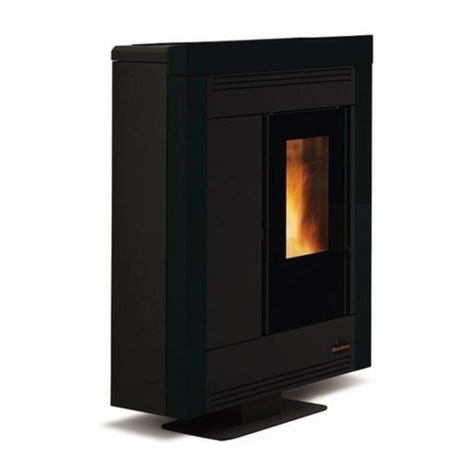
Extraflame
Extraflame SOUVENIR user manual

Vogelzang International
Vogelzang International BX26E owner's manual

Town & Country Fires
Town & Country Fires Little Thurlow Installation and user instructions
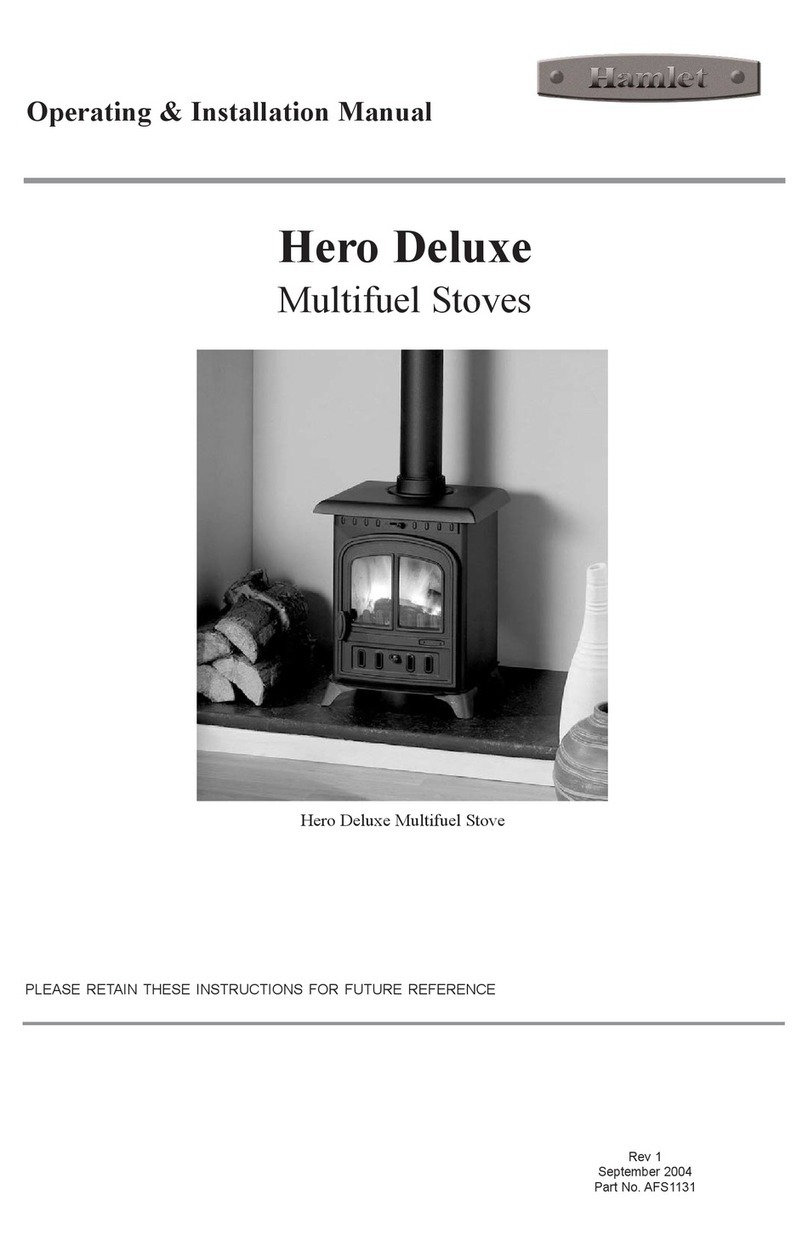
Hamlet
Hamlet Hero Deluxe Operating & installation manual

MCZ
MCZ MUSA COMFORT AIR MATIC 14 M1 Use and installation manual
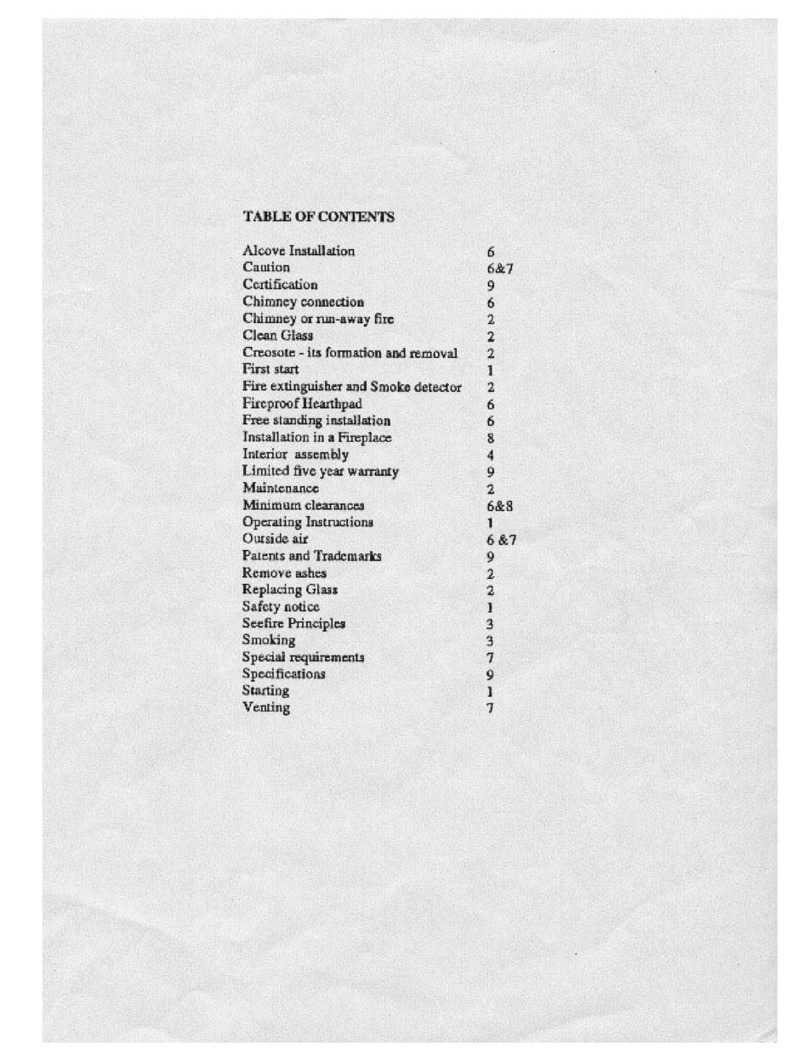
Seefire
Seefire 900S operating instructions

FOTILE
FOTILE GAG76202 user manual
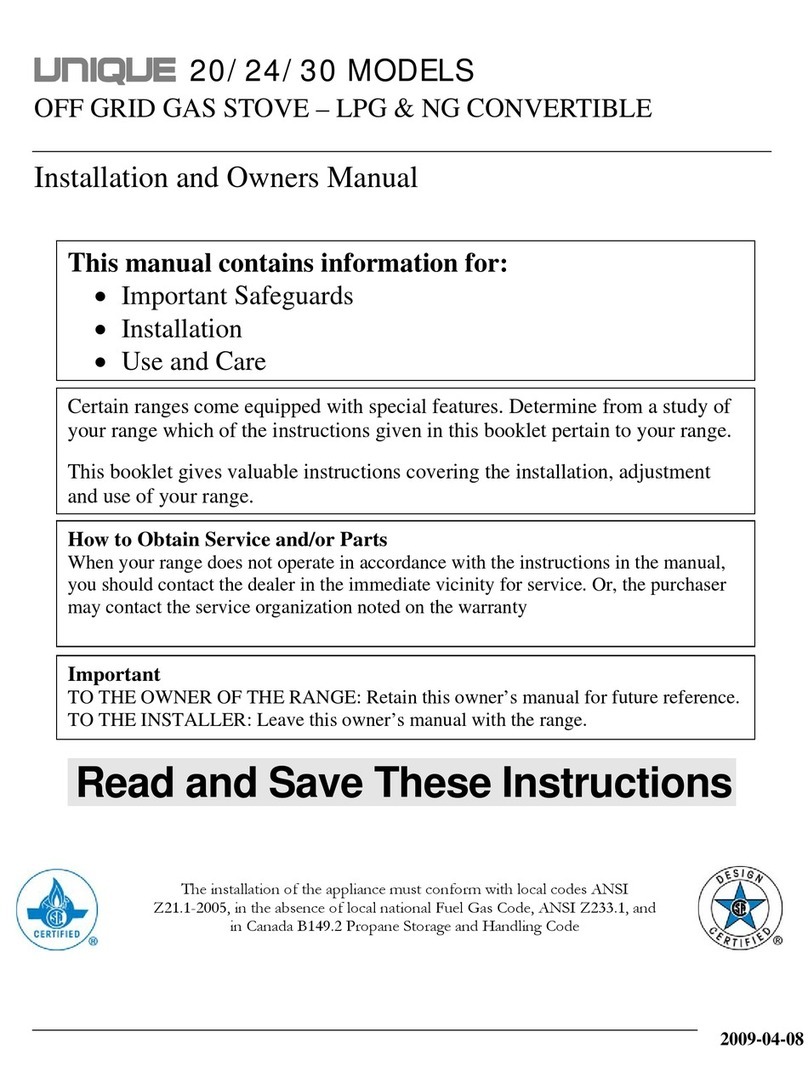
Unique
Unique 20 Installation and owner's guide
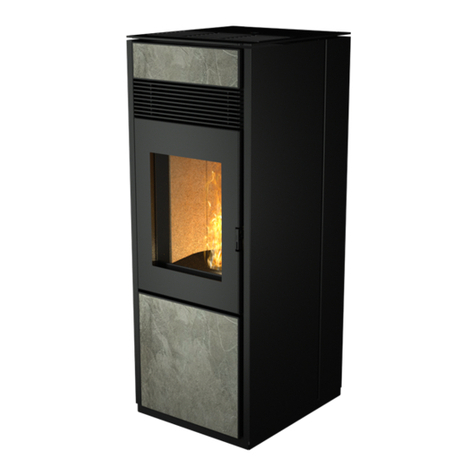
Nobis
Nobis A10 V PLUS QUADRA Installation, use and maintenance manual
